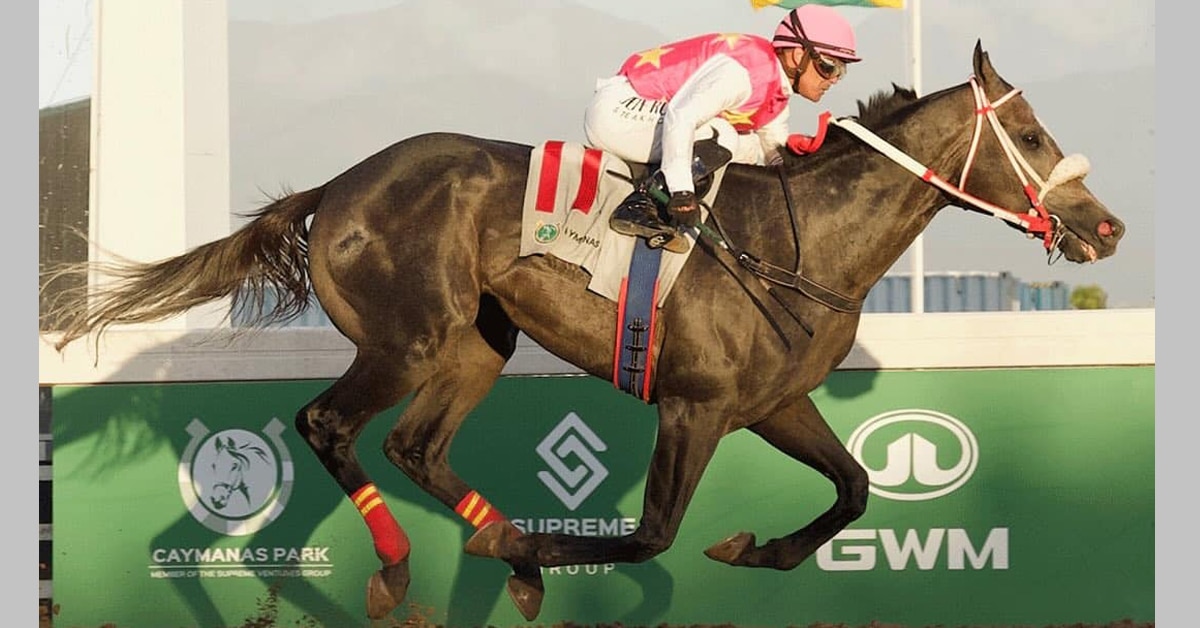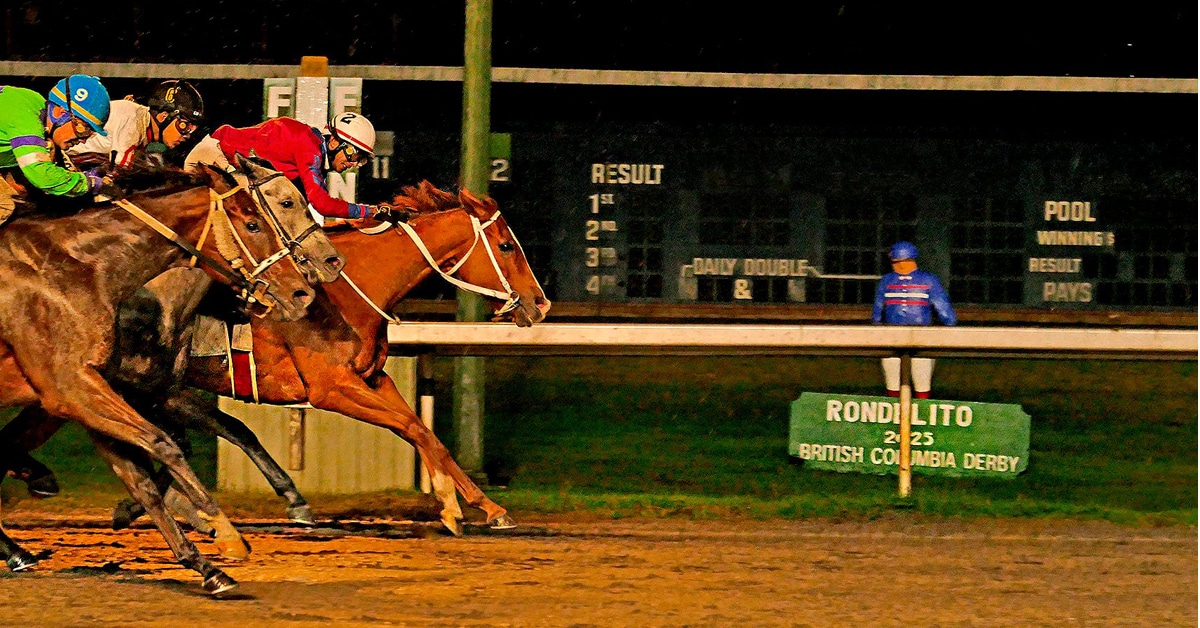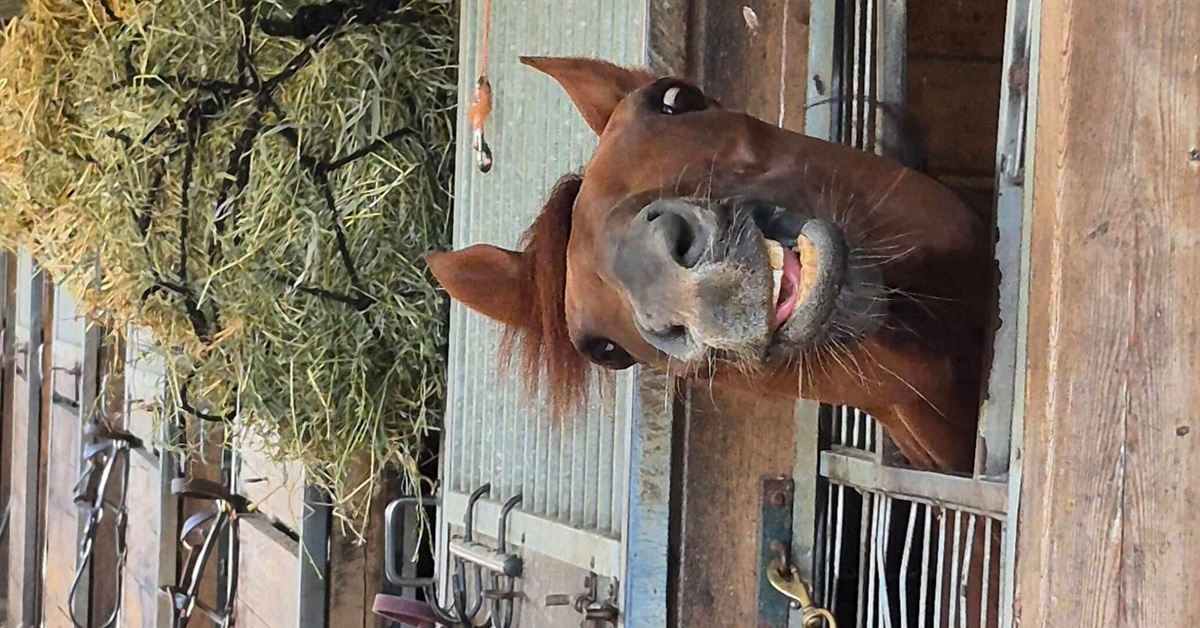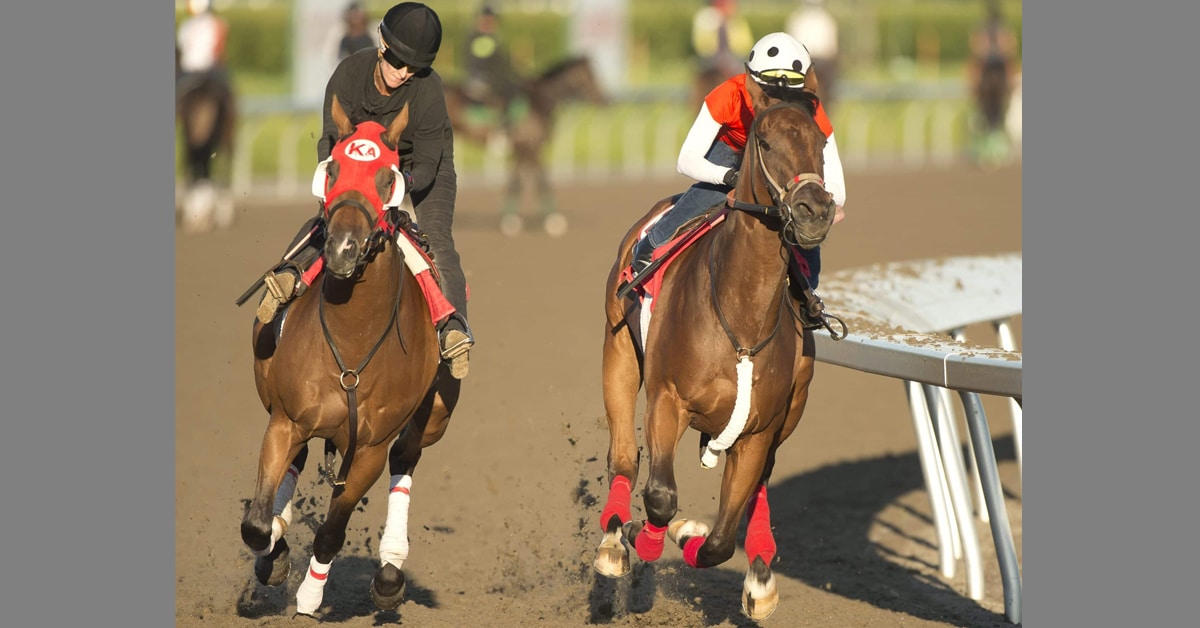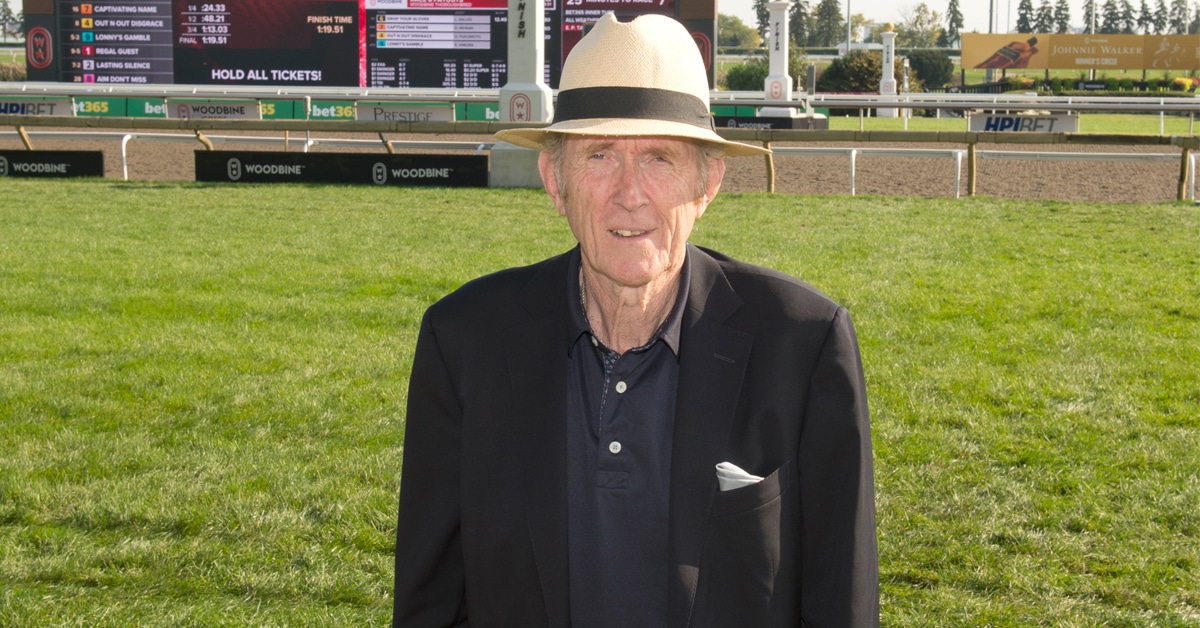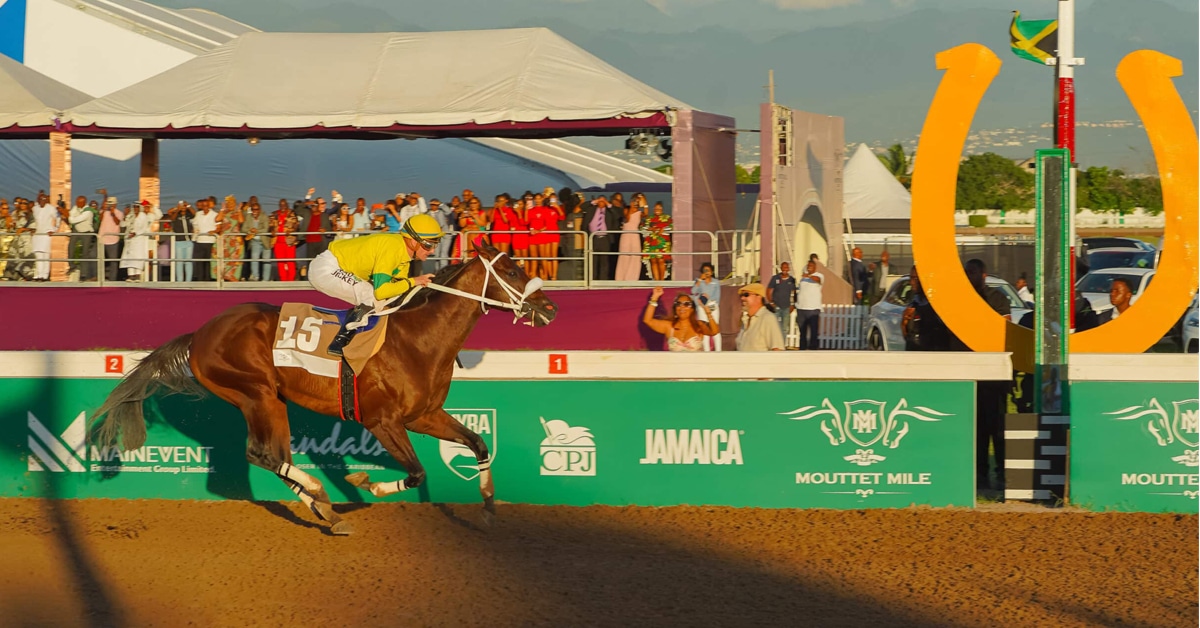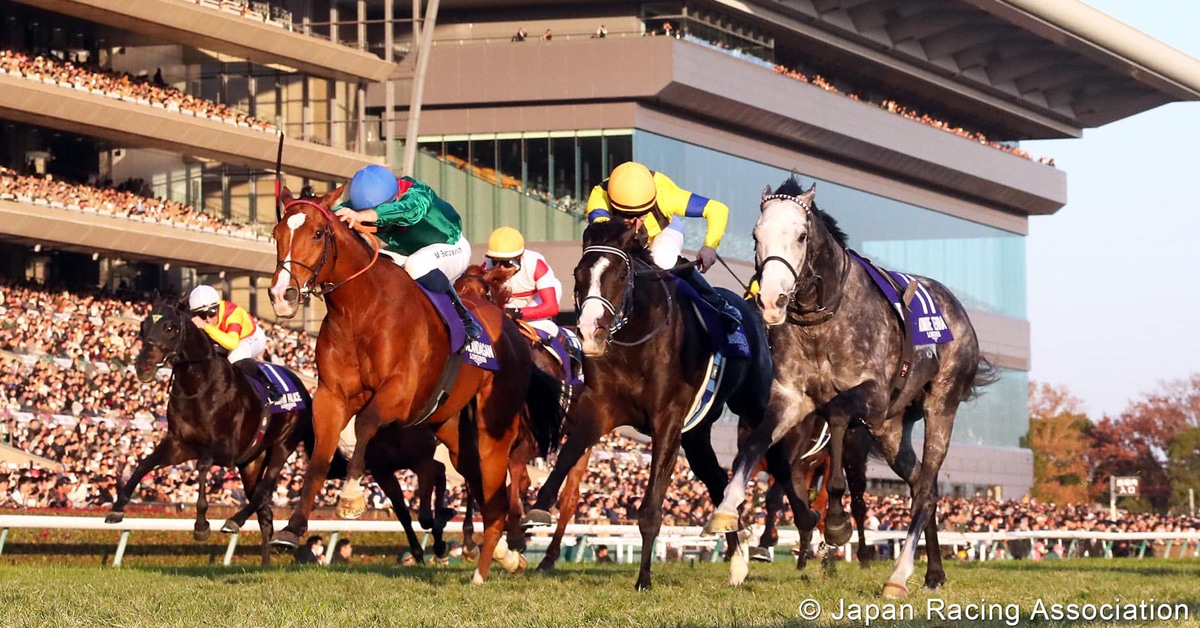Oh my goodness who would have thought there was so much drama in the driving world. We had our fill today, on and off the marathon course. First, Germany’s Christoph Sandmann was eliminated after one of his wheelers slipped and fell in obstacle 5. Tangled in the harness, Wanita needed outside assistance to get her back on her feet. It’s never a comfortable moment when a horse goes down but it’s even more unsettling when the horse is attached to a carriage and three mates. Wanita is fine by the way.
Across the way at the Marina, one of the two water obstacles, US driver Misdee Wrigley-Miller and her team managed to catch a coax cable in a wheel, and drag it around the obstacle before it snapped, cutting out the live stream to the on-course video screens. I am very surprised no protest was filed but cables should not be laid in the path of any horse unless they are completely buried so that they can not be disturbed. It’s just common sense.

KNHS press officer Charlotte Gunnink tears up the third set of “official” results after trashing her third revised press release.
So back in the media center there was even more hullabaloo over the official results for the team and individual standings. The initial results placed The Netherlands first, the USA second and Belgium third. About two hours elapsed before the announcement of a different result: USA first, Belgium second and The Netherlands third. Of course by then, everyone had pretty much filed copy, posted or hit send on their press releases. Human error apparently was to blame. Someone somewhere put the wrong numbers in the wrong column and the President of the Ground Jury signed off on them without really having a good look. So then copy is re-written and re-posted according to the new results. One hour later there is another announcement. Nope those second results were wrong! It’s actually USA first, The Netherlands, second and Belgium, third. WWWWHHHHAAAATTTT?? A few minutes after ripping my hair out, I went to ask WTF was going on? Can we please have an explanation for all this confusion. The answer: The second version of the results is the correct version. An appeal filed by Bram Chardon which would have taken the Dutch into silver medal position, was rejected by the Ground Jury. Why? Because he filed it too late!!
DUTCH GOLD
For the first time in Para history the Dutch team defeated the British for team gold. After the London 2012 Games the Dutch Federation began to invest more in their Para dressage programme. Two medals in London became seven in Rio but it wasn’t until Tryon that they were able to beat the Brits. According to Maarten van de Heyden, the federation’s Top Sport Director, the annual budget for Para-dressage is 200,000 euros (CAN $304,345). One third comes from the Federation while 70% is paid by the National Olympic Committee. The amount covers the national coach’s salary as well as travel and training. Para dressage is also integrated with the Olympic disciplines in the federation’s Talent Plan which prepares young riders for international sport.
TEAM WORK MAKES A DREAM WORK

the formidable Clive Milkins, the man behind Britain’s incomparable success, and now working on Canada’s.
Canada’s budget for Para dressage ($558,966 in 2017) is considerably more than the Netherlands. In fact only Jumping ($906,177 in 2017) receives more funding. While our Para ladies did not medal here at WEG, their chances of doing so in future have increased with the arrival of the formidable Clive Milkins, the man behind Britain’s incomparable success.
Clive coached Sophie Wells, who at 28, has more World, Paralympic and European medals than she has years, as well as two other British athletes competing in Tryon – Natasha Baker (team and individual silver) and Erin Orford (team silver). They all began riding at the Therapeutic Riding Center that Clive ran for over 20 years in the UK. “Sophie came when she was 13 and she was a very clever but challenged youngster,” recalls Clive. “ I just thought ‘wow’ she has the X factor. We went to Athens when she was 16 and everybody said she wouldn’t win a medal and I said ‘oh yes she will.’” Sophie indeed won a bronze medal and thus followed 28 more medals, 20 of them gold, over the ensuing 14 years.
“When you get nine golds with a horse you’ve trained from scratch, I actually decided what else was there to do with the British team? I needed new goals. A new challenge.”
And that challenge is taking on Canada’s Para team and guiding them to the podium.
“My real love is taking children and adults from therapeutic riding into the sport of Para riding. I believe very strongly that without grassroots there is no future.”
When Clive looked at the Canadian system he found “Stunning coaches, really good athletes and lovely horses.” The components were there they just needed to be pulled together. “Canada has given me an amazing opportunity to build a proper program. It’s about being the best you can be with the talents that you have; whether it’s the coach, or the groom, or the horse. With a system like that, better keeps on getting better.”
With one rider in Florida, one in England, one in Toronto and one in BC , it would not be in the best interests of horse welfare or athlete welfare to bring them together on a regular basis. Therefore Clive visits each rider once a month and spends a couple days with each athlete, giving clinics and talking to coaches and grooms. In the run up to championships, he’ll take a four or five star judge along with him, “so the athletes learn that they aren’t scary and it’s not a them and us situation.”
“This sport will only evolve if judges talk to athletes and athletes talk to coaches about everybody’s needs and we do it all together and that is really my plan for Equestrian Canada.”
More News
